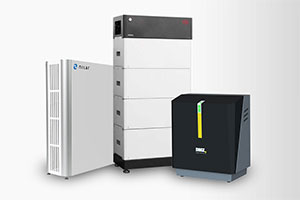sector / memory
This page is still under construction!

If the operators of PV systems feed the electricity generated by their systems into the public grid, they receive a feed-in tariff from the state. For a long time, this paid off quite well, because the feed-in tariff was a lot higher than the cost of electricity from the socket, so that covering one's own requirements, especially through storage, was only of secondary importance. But then the federal government gradually lowered the feed-in tariff drastically, so that today it is more worthwhile to use the self-generated electricity primarily in the household than to sell it for a low feed-in tariff and, if necessary, to use the increasingly expensive electricity from the grid for self-consumption to cover the net. In the course of this development, PV storage systems have become and are becoming increasingly important. Because the times of solar power generation and consumption are not always in the same time frame.
Photovoltaic systems are often equipped with storage systems to store the self-generated solar power and use it later. There are several reasons why installing a storage unit in conjunction with a photovoltaic system can make sense:
1. Optimization of self-consumption: A photovoltaic system only generates electricity when the sun is shining. Without storage, the electricity produced would be fed into the public electricity grid (feed-in tariff) or possibly lost if the household electricity requirement is low. With a storage system, the excess solar power can be stored and used when required, which increases self-consumption and reduces the purchase of more expensive mains power.
2. Independence from the power grid: By storing the solar power, the household can become less dependent on the power grid to a certain extent. Storage can improve security of supply, particularly in regions with high electricity prices or an uncertain power supply.
3. Peak Load Coverage: During times of high power demand or when additional devices are running at the same time, the storage can act as a reserve to provide the amount of energy needed.
4. Grid relief: The use of storage can reduce the load on the public electricity grid, since less electricity is fed into the grid.
5. Feed-in tariff optimization: In some countries or regions, solar system operators receive a feed-in tariff for the electricity fed into the grid. Storage makes it possible to reduce the feed-in and instead use the self-generated electricity yourself, which can be financially advantageous.
The timing of installing a storage system depends on various factors, such as individual electricity consumption habits, current electricity prices, local subsidies and the costs of the storage technology. In some cases it may make sense to install the storage at the same time as the photovoltaic system, while in other cases it may be more advantageous to retrofit the storage later, as technology has advanced or prices have fallen.
Beispiel: BYD Speicher
https://www.youtube.com/watch?v=oIHk_7
Speichertest 2021; HTW Berlin
https://www.youtube.com/watch?v=FxiKV0KMeAY
Stromspeicher - Inspektion 2021
https://pvspeicher.htw-berlin.de/speicher-inspektion-2021/
